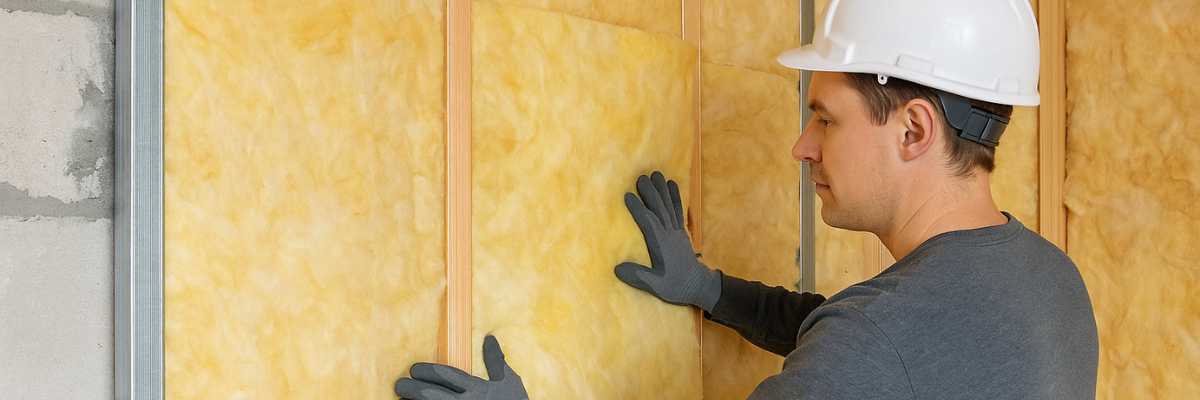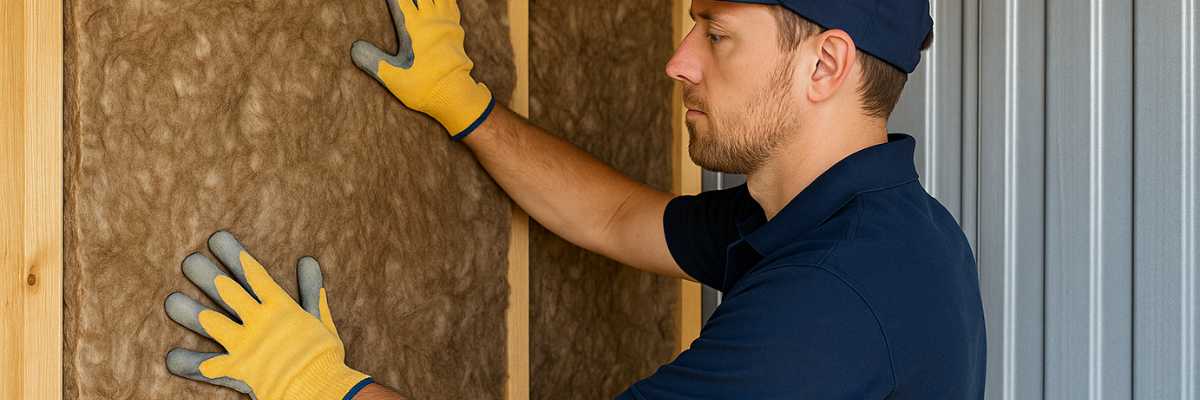One of the best methods to increase energy efficiency, lower utility costs, and preserve a cozy interior climate is to insulate your house. In Australia, heating and cooling account for around 40% of household energy use. According to the Australian Department of Industry, Science, Energy, and Resources, effective insulation can reduce heating and cooling energy needs by up to 50%, leading to substantial cost savings on energy bills. Insulation experts recommend different materials depending on the region; for instance, reflective insulation is ideal for hot climates, while bulk insulation like batts is effective in cooler areas.
This blog examines the best insulating materials that professionals suggest and the meaning of the R-value. You can consider aspects like cost-effectiveness, thermal performance, environmental impact, and ease of installation to choose an insulation material for your home.
Different Materials And Choices For Home Insulation
You have various options for home insulation. Check about various options to choose the best insulation material for your home.
Fibreglass Insulation
One of the most popular and extensively utilized insulation materials in homes is fibreglass insulation. It comes in rolls, batts, and loose-fill formats and is composed of fine glass fibres. In both new construction and retrofits, fibreglass is perfect for insulating floors, walls, and attics.
Advantages
High R-Value: For every inch of thickness, fibreglass usually gives an R-value of R-2.9 to R-4.3.
Affordability: In comparison to other insulation materials, it is comparatively cheap.
Fire Resistance: Fiberglass is inherently non-flammable due to its composition.
Ease of Installation: Installing it is simple because it comes in pre-cut rolls and batts, specifically for regular wall cavities.
Cons
Health Concerns: If fibreglass particles are inhaled, handling them may irritate the skin or create respiratory problems.
Air Gaps: Inadequate installation may cause gaps that lessen the product's efficacy.
Cellulose Insulation
Fire-retardant chemicals are applied to recycled paper materials, mainly newspapers, to create cellulose insulation. Mostly, it is offered as loose-fill insulation. Older homes or those with irregularly shaped areas are good candidates for using cellulose. These are the best to insulate their attics, walls, and cavities.
Advantages
Environmental Impact: With a high percentage of recycled content, cellulose is among the greenest insulating materials.
Excellent Air Sealing: It reduces air leakage by efficiently filling gaps and holes.
High R-Value: The R-value of cellulose is around R-3.2 to R-3.8 per inch.
Cons
Settling: The cellulose may become less efficient as an insulator over time.
Moisture Sensitivity: If not installed correctly, it may absorb moisture and cause mould growth.
Spray Foam Insulation
This product, which is based on polyurethane, expands when applied to fill in spaces and produce an airtight seal. There are two varieties available: open-cell and closed-cell foam. Spray foam is great for filling gaps around windows and doors, sealing attics and crawl spaces, and insulating hard-to-reach areas.
Advantages
High R-Value: One of the greatest R-values per inch is provided by closed-cell spray foam. And this is usually between R-6 and R-7. The R-value of open-cell foam is lower, ranging from R-3.5 to R-4 per inch.
Air Sealing: Spray foam offers superior moisture resistance and air sealing. It works by lowering the possibility of mould and mildew.
Support Structure: Closed-cell foam gives roofs and walls more strength and rigidity.
Cons
Cost: Compared to alternative insulating materials, spray foam insulation is more expensive.
Professional Installation Needed: For correct installation, specific tools and knowledge are needed.
Environmental Impact: Because of the blowing agents utilized, certain spray foams have a higher potential to cause global warming.
Mineral Wool Insulation
Industrial waste materials or volcanic rock are used to make mineral wool; sometimes referred to as rock wool or slag wool. It is available in rolls, batts, & loose-fill forms. Mineral wool works best in spaces like external walls, basements, and attics where soundproofing and fire protection are top concerns.
Advantages
Fire Resistance: Mineral wool is a safe option for locations that are prone to fires. Because it can tolerate extremely high temperatures.
Soundproofing: It reduces noise transmission because of its superior sound absorption qualities.
High R-Value: The R-value of mineral wool is in the R-3.7 to R-4.3 range per inch.
Cons
Cost: In general, the cost is more than that of fibreglass insulation.
Moisture Sensitivity: Although it is waterproof, extended exposure to wetness may lessen its performance.
Rigid Foam Board Insulation
Panels composed of polystyrene, polyisocyanurate, or polyurethane make up rigid foam board insulation. Usually, walls, roofs, & foundations are insulated with these planks. For insulating external walls, flat or low-slope roofs, and basement walls, rigid foam board is the best choice.
Advantages
High R-Value: The R-value of rigid foam boards varies depending on the substance, from R-3.8 to R-6.5 per inch.
Moisture Resistance: They can be used in below-grade applications because of their strong moisture resistance.
Versatility: Rigid foam is useful for insulation in basements and external wall sheathing, among other uses.
Cons
Installation: It can take a lot of work to cut and fit hard foam boards.
Price: Generally speaking, it is more costly than other insulation materials, particularly for high-performance boards made of polyisocyanurate.
Cotton (Denim) Insulation
Recycled denim is a common material for cotton insulation, making it an environmentally beneficial choice. It can offer effective thermal management and can be purchased in batt form. When sound absorption and environmental sustainability are top concerns, cotton insulation works great for interior walls and ceilings.
Advantages
Environmental Impact: Cotton insulation is a sustainable option because it is composed of natural and recyclable materials.
Non-Toxic: Because it doesn't irritate the skin or lungs, it is safe to handle without protective clothing.
Sound Absorption: Cotton insulation provides good sound absorption.
Cons
Cost: Compared to fibreglass and cellulose insulation, it is typically more expensive.
Reduced R-Value: R-3.5 per inch is the average R-value for cotton insulation.
Reflective or Radiant Barrier Insulation
Materials that reflect radiant heat instead of absorbing it make up reflective or radiant barrier insulation. Aluminium foil is typically laid on top of a substrate made of foam board or kraft paper. To cut down on cooling expenses, radiant barrier insulation works best in hot areas when installed in attics and roofs.
Advantages
Heat Reflection: Because it reflects heat well, it's perfect for hot areas where cooling expenses are an issue.
Lightweight and Simple to Install: Installing radiant barriers is simple, particularly in attics and beneath roofs.
Cons
Low R-Value: They are usually used in combination with other insulation materials. Radiant barriers do not offer much thermal resistance when used alone.
Restricted Use: It works best in hotter regions when lowering heat intake rather than heat loss is the main priority.
Natural Fiber Insulation
Renewable materials such as wool, cotton, hemp, or straw are used to make natural fibre insulation. It is a thermally efficient and environmentally friendly choice. Homes that value sustainability and indoor air quality and are concerned about the environment are the ideal candidates for natural fibre insulation.
Advantages
Sustainability: Natural fibre insulation has a minimal environmental impact. Because it is made of natural and renewable resources.
Non-toxic: It contains no dangerous compounds and is safe to handle.
Good R-Value: Natural fibre insulation can provide a competitive R-value, usually around R-3.5 per inch; depending on the type.
Cons
Cost: Insulation made of natural fibres is frequently more costly than that of synthetic fibres.
Moisture and Pest Concerns: If natural fibres aren't handled properly, they might absorb moisture and get infested with pests.
Polyisocyanurate(polyiso) Insulation
Known for its high R-value and thermal resistance, Polyisocyanurate—also referred to as Polyiso—is a kind of rigid foam insulation. It is frequently used for walls and roofs.
Advantages
High R-Value: With an average R-value of R-6 to R-7, Polyiso provides one of the greatest R-values per inch.
Moisture and Fire Resistance: It resists heat and moisture well. And, foil is frequently used to provide an extra layer of protection against it.
Lightweight: Polyiso boards are manageable and lightweight.
Cons
Cost: Compared to other forms of rigid foam insulation, it is more expensive.
Thermal Drift: Thermal drift is the phenomenon wherein Polyiso's R-value gradually drops over time.
Conclusion
The climate, your spending limit, and the demands of your particular application are important. They will all play a role in selecting the best insulation material for your house. Fibreglass is still a common material. Because it is inexpensive and simple to install, although cellulose has advantages for the environment & performs well in terms of heat. High-performance options with superior R-values and air-sealing capabilities can be found in rigid foam boards and spray foam. Homeowners who care about the environment are drawn to natural fibres; while mineral wool is preferred for its ability to resist fire and sound.
Choosing the right insulation material for your house will help you maximize long-term savings, comfort, and energy efficiency. Speak with an expert in this regard.







